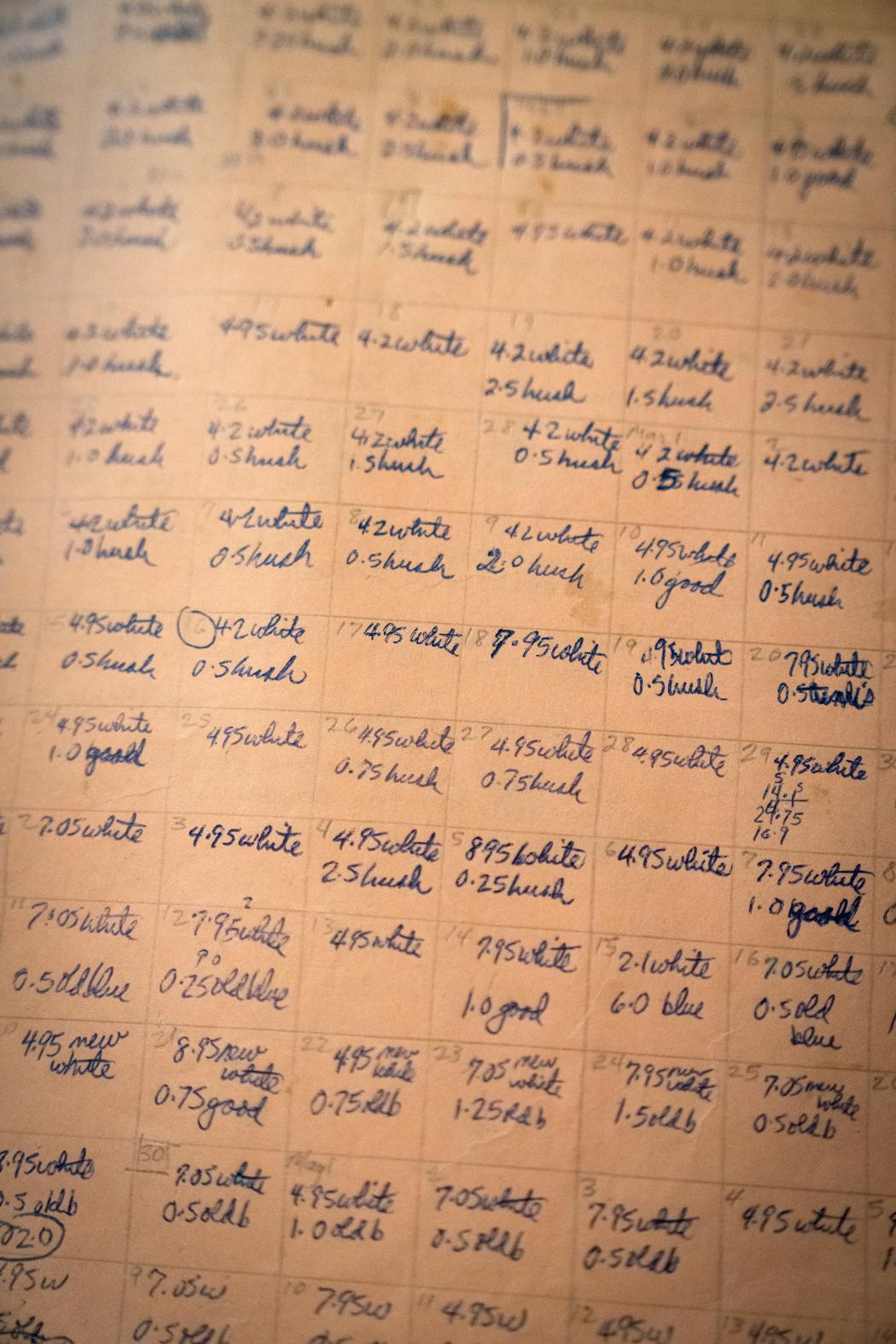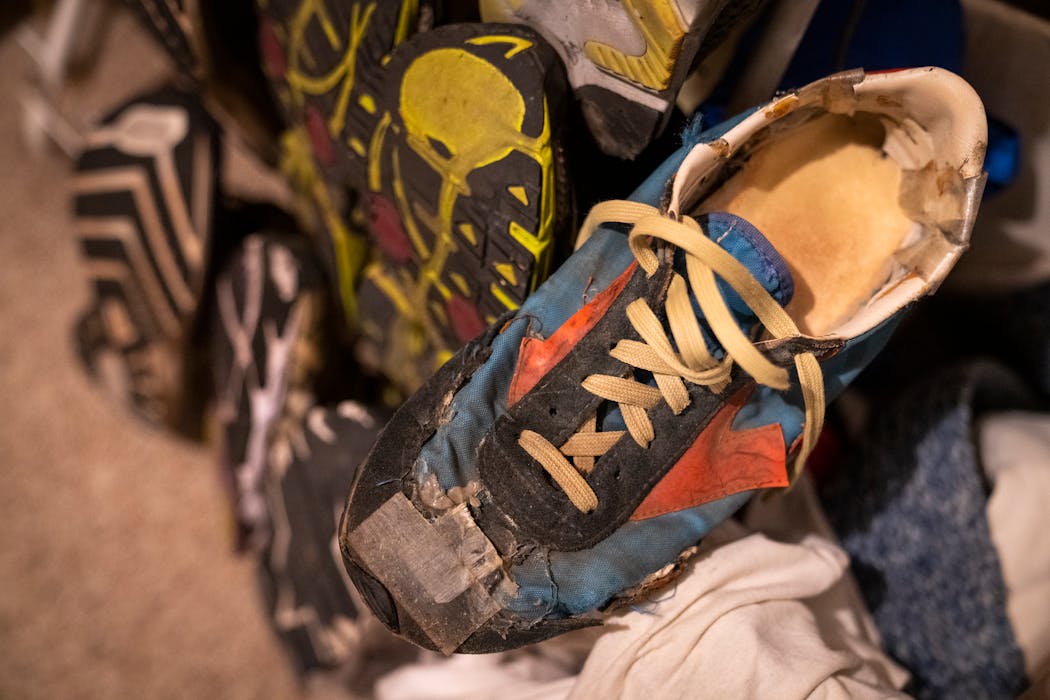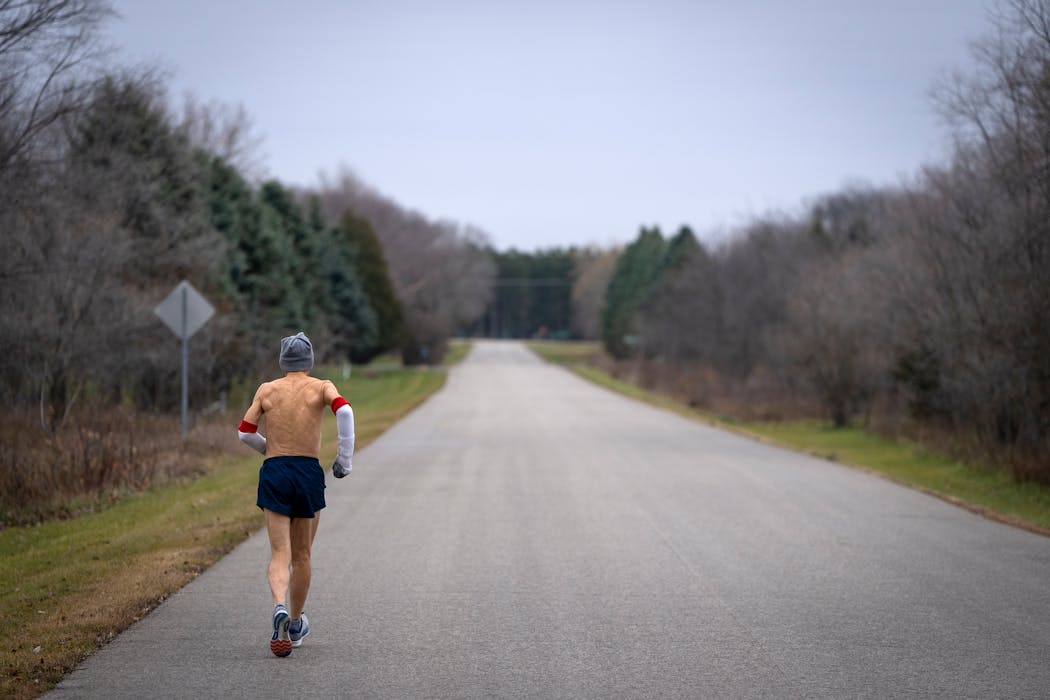Growing up in St. Paul, Steve DeBoer wasn't the greatest athlete.
When his sixth-grade class ran a 50-yard dash, he came in next to last. He could do only five pushups and got a C in seventh-grade phy ed class. In ninth grade, he got cut from both the basketball and baseball teams.
To get in better shape, he started running every day. That was more than 52 years ago — and he hasn't stopped.
Dec. 1 marks the 19,171st day in a row that DeBoer has run at least a mile. The retired Mayo Clinic dietitian, who lives in Rochester, also turns 69 today. No matter how he celebrates, he will run.
According to Streak Runners International and the United States Streak Running Association, DeBoer has the third-longest running streak in the world. "Probably in the solar system, too," DeBoer said. "We're not sure."
Along the way, he's completed 71 marathons and more than 800 running races total. He also started doing pushups almost every day since 1967. He estimates he's done more than 2 million of them since that seventh-grade PE class.
"I like to do things consistently," DeBoer said.
Running streaks run in DeBoer's family. His father, Wendell, and a brother, David, both had streaks that lasted more than six years. A nephew, Kevin Duban, is closing in on 1,000 days.
And being a Minnesotan might play into it. On a per capita basis, Minnesota has more streak runners than any other state, according to DeBoer, who is on the board of Streak Runners International. Maybe it's because Minnesota runners don't make excuses about the weather?
The nonprofit works on the honor system. Runners verify that they have made their daily mile. But DeBoers can document his every run thanks to years of handwritten running logs and a diary he started keeping in seventh grade.
That's how we know that on June 7, 1971, the 16-year-old DeBoer was at the Hamline University field house with his high school choir, rehearsing a graduation performance. When rehearsal was over, he decided to jog the 2 miles home to St. Anthony Park wearing long pants and tennis shoes and carrying his dress shirt.
He didn't know it at the time, but that would be the beginning of his decades-long streak. (He actually started running every day a year earlier, but not always a mile or more.)
"Back then, there was no running streak organization, no minimum distance," he said.
In sickness and health
DeBoer has done some unusual things to keep his streak alive.
Once on a family trip to South Dakota, he had his father stop the car so he could run the last 2 miles to his grandparents' house before midnight. He's also trotted around airport terminals when his flights have been delayed. He even kept running during a stint in the Peace Corps in Ecuador, where locals called him "loco."
Once he had to have surgery to have a kidney stone removed. "The next day I was on pain meds, so 2.5 miles was easy," he said.
He's run through an injury (2007) that put him in a walking boot. (He focused on the doctor's instructions: "Weight bearing as tolerated.) And with a stress fracture (2021). That time, he was given advice from a sports medicine doctor to take a six-week break. Which he ignored.
"She wasn't happy with it, but she knew I wasn't going to do it," DeBoer said.
The closest call came in February 2020, when he got sick after flying to Washington to help celebrate a fellow runner hitting the 50-year-streak mark. When he was there, he was hospitalized with influenza B and double pneumonia.
Doctors gave him antibiotics and put a drain in his back to remove the fluid from his lungs. DeBoer prayed, then got out of his hospital bed and jogged around his room for 20 minutes. He kept that up for the week, jogging even when the infectious disease specialist came into his room.
"He was very surprised I could run, based on how sick I was, but he did not see any reason why I should not," DeBoer wrote in "Traversing the Tundra," a memoir of his running.
His wife, Gail, was also unfazed. "We didn't think it was odd," she said.
"I'm not the first person to do something like this," DeBoer said. He said streak runners have jogged in the hospital pushing along rolling IV poles after appendectomies. "We say, 'Oh, yeah, that's no big deal.' "
"I have had no knee problems," he said. "I am proof that running doesn't hurt your joints."
Almost streaking
DeBoer doesn't like to get hot, so he typically runs without a shirt if it's above freezing. He will run in shorts down into the mid-20s. He used to run to commute to work — during the winter.
Friend Steve Gathje describes DeBoer as "actually pretty normal." But that's coming from a 68-year-old Plymouth man whose running streak lasted nearly 46 years.
"After the first year or two it just becomes natural," Gathje said of running daily.
"These things become a part of who you are," agreed John Magnuson, a 74-year-old St. Paul runner who once had a 15-year streak and is currently working on a 500-day one. "When I started running, it was what a lot of runners did."
To keep a really long running streak going requires some luck, said Mark Washburne, managing director and president of the U.S. Running Streak Association. "There is also determination."
DeBoer's father ran past the age of 85. But DeBoer knows nothing is guaranteed. "Anything can happen. It's one day at a time, no matter what your age," he said.
So, if something happens to interrupt his long string of runs, "it'll be something I'll mourn," he said. Until then, "I will continue running because it is a passion but not an idol."
Besides, DeBoer, a devout Christian, said he's not sure if running streaks are really broken by death.
"We don't know what happens afterwards," he said. "They're probably out running again. What else are they going to do?"
Steve DeBoer's running streak by the numbers;
179,970: Total miles he's run since June 7, 1971.
31 degrees: How cold it needs to be for him to don a shirt while running.
125,000: Approximate number of miles he's run shirtless.
28: Number of running shoes he's currently using, typically running on a different pair each day.
79: Estimated age DeBoer will be when he meets his goal of running the distance to the moon. (Assuming he can maintain his current rate.)
3: Number of dog bites he's gotten while running.

The 5 best things our food writers ate this week

A Minnesota field guide to snow shovels: Which one's best?

Summer Camp Guide: Find your best ones here

Lowertown St. Paul losing another restaurant as Dark Horse announces closing






